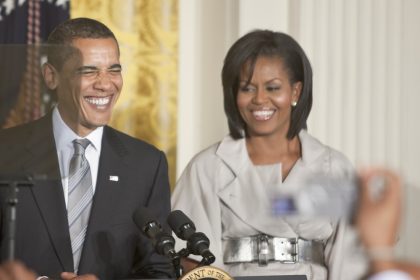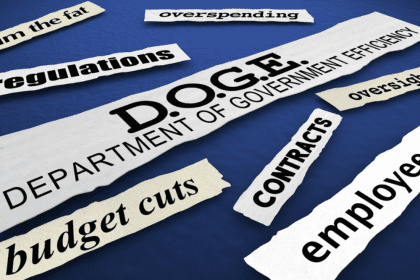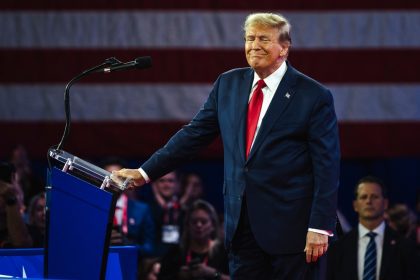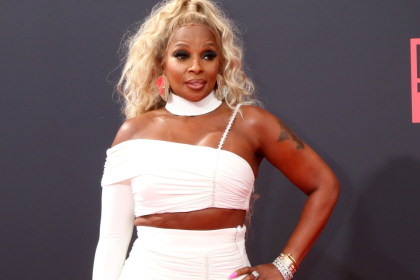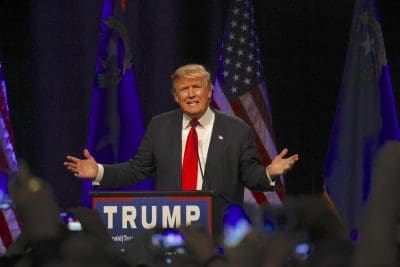
Chicago Ideas Week has been an inspirational awakening for many in Chicago, as $15 earns access to many of the movers, shakers, and thinkers of this generation. Two events really struck a chord — the conversation with former President Bill Clinton, and the Future of News seminar.
Former President Clinton Sounds Off
Former President Bill Clinton and Time magazine managing editor Richard Stengel addressed the packed Chase Auditorium theatre on Tuesday with a conversation about the economy, jobs and Steve Jobs.
The Occupy Wall Street protesters are fighting against “unaccountable power,” he said. “The Occupy Wall Street crowd basically is saying, ‘I’m unemployed and the people that caused this have their jobs again and their bonuses again and their incomes are high again,’” Clinton said. “So I think it can be a good positive debate.”
Clinton recently penned a book, Back to Work: Why We Need Smart Government for a Strong Economy that will be on the shelves in a few weeks. His best plan to fix the economy is to invest in green technology, correct America’s mortgage woes, and government involvement, that is, an anti-government strategy won’t work.
Stengel asked Clinton if Americans would learn to tolerate 9 percent unemployment, and the crowd went bananas when Clinton shot from the hip: “The real unemployment rate is at least 15 percent, and that doesn’t count those working part time.”
In typical ‘keep-it-real,’ fashion Clinton said that the nation is more polarized now than when he was president, mainly, that like likes like. “We’re not nearly as gender-biased as we used to be, We’re not nearly as racist as we used to be. We’re not as anti-gay as we used to be,” Clinton stated. “The only bigotry we’ve got left is: we don’t want to be around anybody who disagrees with us.”
Clinton became sentimental when he talked about Steve Jobs, the late founder of Apple. At one point, Jobs offered Clinton a place to stay that was near his daughter Chelsea when she attended college.
Clinton called Jobs a “very determined man” and said that Jobs “was always thinking … he had the most intense powers of concentration I ever saw. One thing I learned from watching him is he figured out what he was good at, where his gift is, and he nourished his gift. That’s my advice, `Nourish your gift and don’t quit.’ ”
Did Twitter kill breaking news?
The surface answer is yes, Twitter killed breaking news as it pertains to quick delivery, and no, it did not kill breaking news when it comes to credibility.
Steve Jobs’ death sent 10,000 tweets Per Minute (TPM, a measure Twitter uses to determine the trend pattern of a story), and was the largest news story for Twitter in recent history.
In short order Time magazine stopped the presses to report on Jobs’ life, the way he lived, and how he changed the world. When the magazine hit the newsstands on Friday, the story was days old; Facebook and Twitter users reported the death days before.
Social media platforms have the edge of reporting news as it happens, but the wireless can only tell so much of the story. Social networks tell you the what; traditional media tells you the what-it-means-to-you.
Time magazine’s managing editor, Rick Stengel, moderated The Future of News discussion held during Chicago Ideas Week. Stengel summarized the dilemma of today’s journalism industry in this way: “there is more information available to more people than ever before. We just haven’t figured out how to charge for it yet.”
Panelists included Ayman Mohyeldin, NBC News’ foreign correspondent, New York Times columnist James Warren, and Kara Swisher, co-host of Dow Jones’ “D: All Things Digital,” among other notables.
My takeaway was this: Twitter’s instant delivery model — mass distribution, for all to consume, and for free — has changed the rules of journalism. Nevertheless, media professionals would do best to recognize Twitter as a tool, not the competition.

